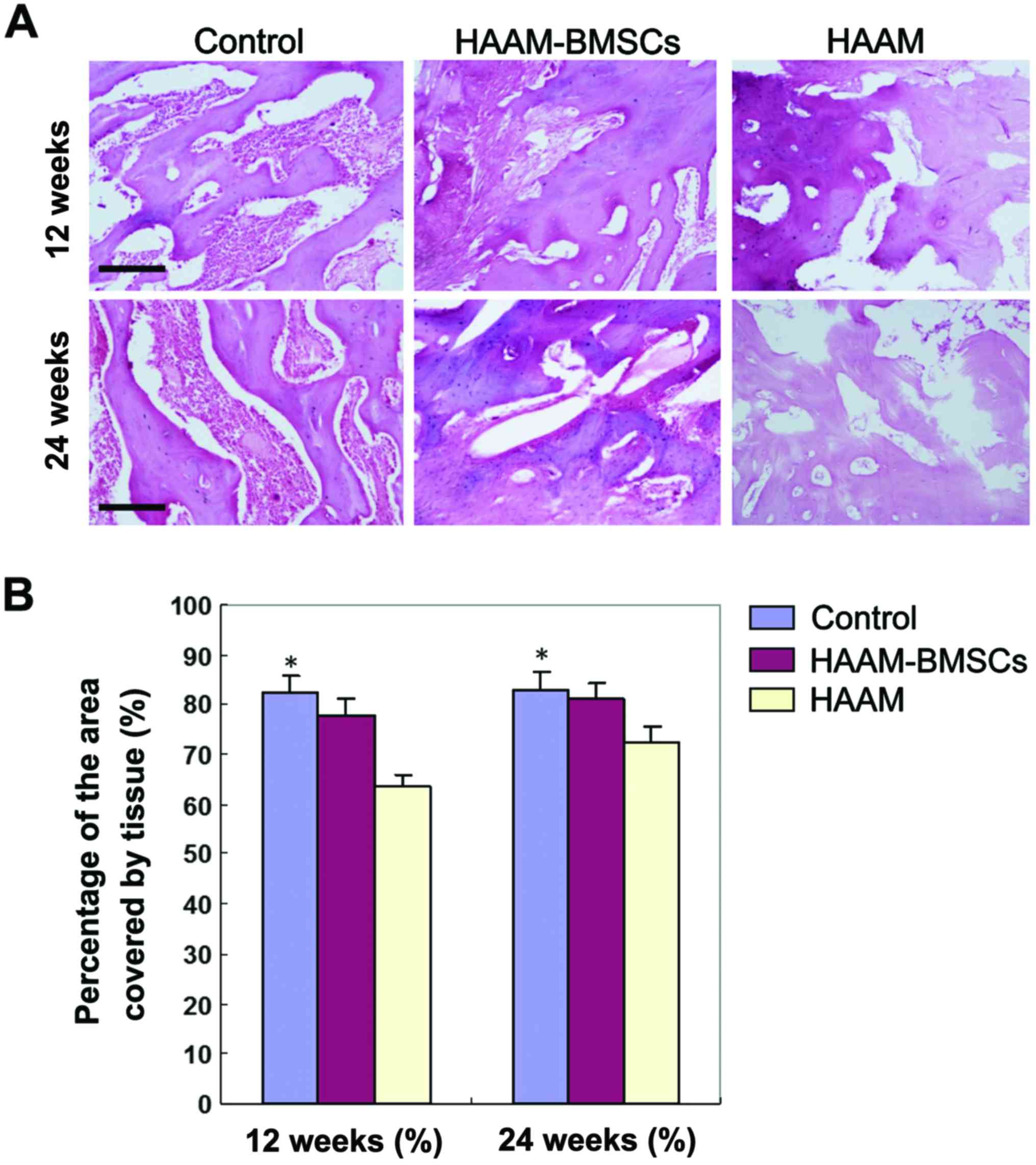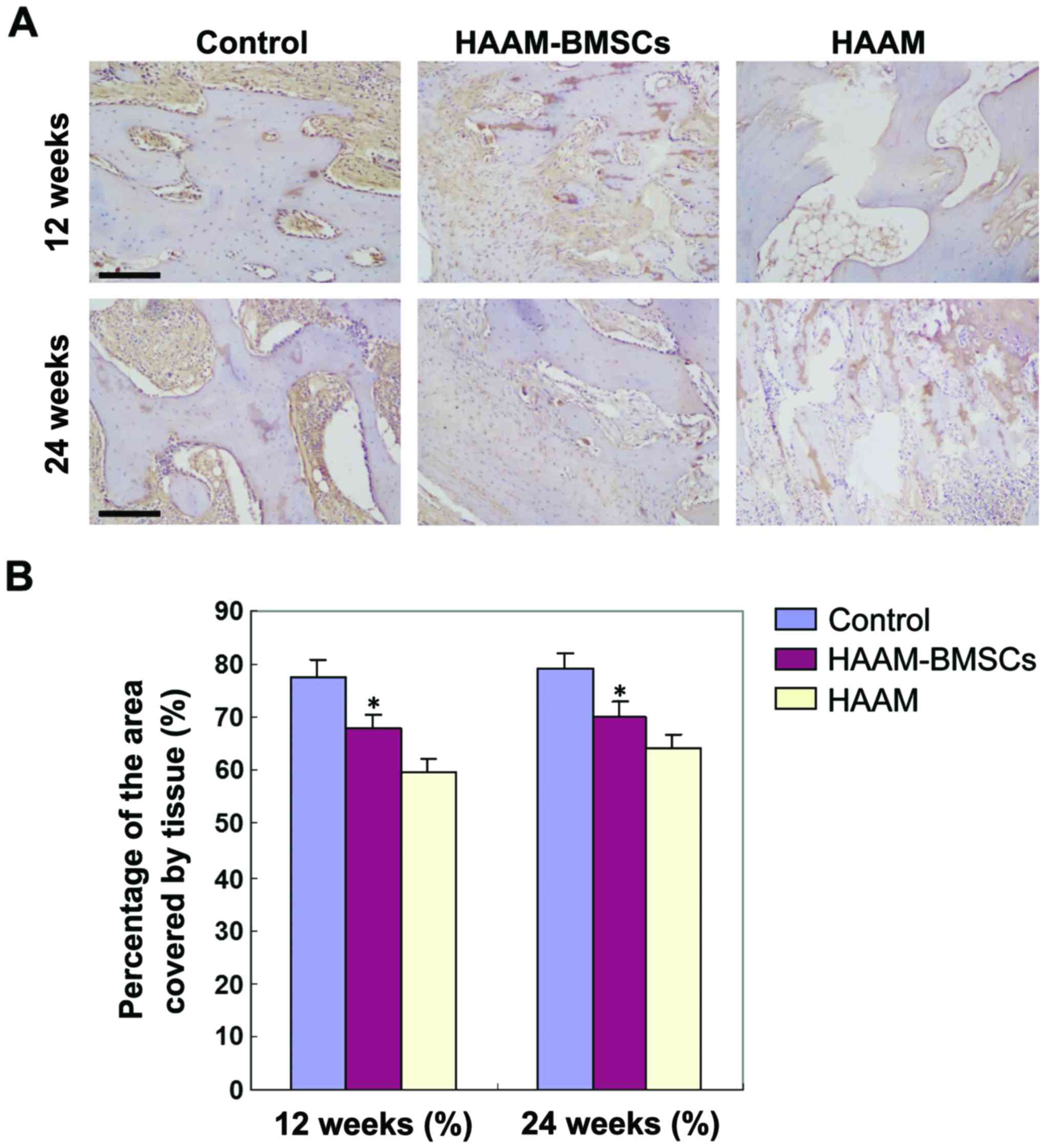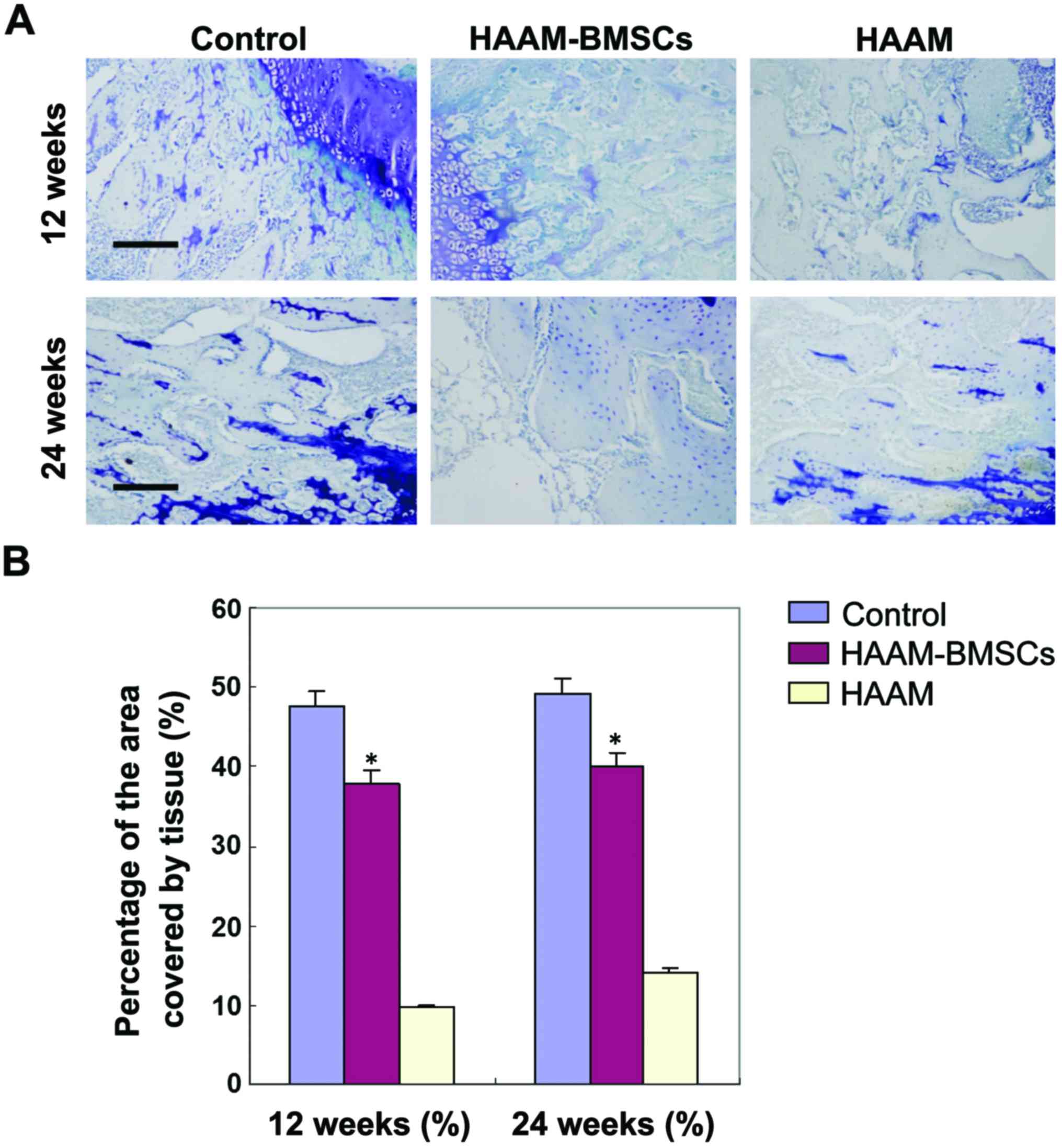|
1
|
Takao M, Uchio Y, Kakimaru H, Kumahashi N
and Ochi M: Arthroscopic drilling with debridement of remaining
cartilage for osteochondral lesions of the talar dome in unstable
ankles. Am J Sports Med. 32:332–336. 2004. View Article : Google Scholar : PubMed/NCBI
|
|
2
|
Mithoefer K, Williams RJ 3rd, Warren RF,
Potter HG, Spock CR, Jones EC, Wickiewicz TL and Marx RG: The
microfracture technique for the treatment of articular cartilage
lesions in the knee. A prospective cohort study. J Bone Joint Surg
Am. 87:1911–1920. 2005. View Article : Google Scholar : PubMed/NCBI
|
|
3
|
Grande DA, Breitbart AS, Mason J, Paulino
C, Laser J and Schwartz RE: Cartilage tissue engineering: current
limitations and solutions. Clin Orthop Relat Res. 367
Suppl:S176–S185. 1999. View Article : Google Scholar
|
|
4
|
Enosawa S, Sakuragawa N and Suzuki S:
Possible use of amniotic cells for regenerative medicine. Nihon
Rinsho. 61:396–400. 2003.(In Japanese). PubMed/NCBI
|
|
5
|
Okawa H, Okuda O, Arai H, Sakuragawa N and
Sato K: Amniotic epithelial cells transform into neuron-like cells
in the ischemic brain. Neuroreport. 12:4003–4007. 2001. View Article : Google Scholar : PubMed/NCBI
|
|
6
|
Bilic G, Ochsenbein-Kölble N, Hall H, Huch
R and Zimmermann R: In vitro lesion repair by human amnion
epithelial and mesenchymal cells. Am J Obstet Gynecol. 190:87–92.
2004. View Article : Google Scholar : PubMed/NCBI
|
|
7
|
Parmar DN, Alizadeh H, Awwad ST, Li H,
Neelam S, Bowman RW, Cavanagh HD and McCulley JP: Ocular surface
restoration using non-surgical transplantation of tissue-cultured
human amniotic epithelial cells. Am J Ophthalmol. 141:299–307.
2006. View Article : Google Scholar : PubMed/NCBI
|
|
8
|
Pollok JM and Vacanti JP: Tissue
engineering. Semin Pediatr Surg. 5:191–196. 1996.PubMed/NCBI
|
|
9
|
Eyrich D, Wiese H, Maier G, Skodacek D,
Appel B, Sarhan H, Tessmar J, Staudenmaier R, Wenzel MM, Goepferich
A, et al: In vitro and in vivo cartilage engineering using a
combination of chondrocyte-seeded long-term stable fibrin gels and
polycaprolactone-based polyurethane scaffolds. Tissue Eng.
13:2207–2218. 2007. View Article : Google Scholar : PubMed/NCBI
|
|
10
|
Liu Y, Shu XZ and Prestwich GD:
Osteochondral defect repair with autologous bone marrow-derived
mesenchymal stem cells in an injectable, in situ, cross-linked
synthetic extracellular matrix. Tissue Eng. 12:3405–3416. 2006.
View Article : Google Scholar : PubMed/NCBI
|
|
11
|
Freed LE, Vunjak-Novakovic G, Biron RJ,
Eagles DB, Lesnoy DC, Barlow SK and Langer R: Biodegradable polymer
scaffolds for tissue engineering. Biotechnology. 12:689–693.
1994.PubMed/NCBI
|
|
12
|
Mahgoub MA, Ammar A, Fayez M, Edris A,
Hazem A, Akl M and Hammam O: Neovascularization of the amniotic
membrane as a biological immune barrier. Transplant Proc. 36:pp.
1194–1198. 2004; View Article : Google Scholar : PubMed/NCBI
|
|
13
|
Kim BS and Mooney DJ: Development of
biocompatible synthetic extracellular matrices for tissue
engineering. Trends Biotechnol. 16:224–230. 1998. View Article : Google Scholar : PubMed/NCBI
|
|
14
|
Burg KJ, Porter S and Kellam JF:
Biomaterial developments for bone tissue engineering. Biomaterials.
21:2347–2359. 2000. View Article : Google Scholar : PubMed/NCBI
|
|
15
|
Nakamura T and Kinoshita S: Ocular surface
reconstruction using cultivated mucosal epithelial stem cells.
Cornea. 22 Suppl 7:S75–S80. 2003. View Article : Google Scholar : PubMed/NCBI
|
|
16
|
Nakamura T, Endo K, Cooper LJ, Fullwood
NJ, Tanifuji N, Tsuzuki M, Koizumi N, Inatomi T, Sano Y and
Kinoshita S: The successful culture and autologous transplantation
of rabbit oral mucosal epithelial cells on amniotic membrane.
Invest Ophthalmol Vis Sci. 44:106–116. 2003. View Article : Google Scholar : PubMed/NCBI
|
|
17
|
Ducy P, Starbuck M, Priemel M, Shen J,
Pinero G, Geoffroy V, Amling M and Karsenty G: A Cbfa1-dependent
genetic pathway controls bone formation beyond embryonic
development. Genes Dev. 13:1025–1036. 1999. View Article : Google Scholar : PubMed/NCBI
|
|
18
|
Leyva-Leyva M, Barrera L, López-Camarillo
C, Arriaga-Pizano L, Orozco-Hoyuela G, Carrillo-Casas EM,
Calderón-Pérez J, López-Díaz A, Hernandez-Aguilar F,
González-Ramírez R, et al: Characterization of mesenchymal stem
cell subpopulations from human amniotic membrane with dissimilar
osteoblastic potential. Stem Cells Dev. 22:1275–1287. 2013.
View Article : Google Scholar : PubMed/NCBI
|
|
19
|
Inatomi T, Nakamura T, Koizumi N, Sotozono
C and Kinoshita S: Current concepts and challenges in ocular
surface reconstruction using cultivated mucosal epithelial
transplantation. Cornea. 24 Suppl 8:S32–S38. 2005. View Article : Google Scholar : PubMed/NCBI
|
|
20
|
Nakamura T, Inatomi T, Sotozono C, Amemiya
T, Kanamura N and Kinoshita S: Transplantation of cultivated
autologous oral mucosal epithelial cells in patients with severe
ocular surface disorders. Br J Ophthalmol. 88:1280–1284. 2004.
View Article : Google Scholar : PubMed/NCBI
|
|
21
|
Inatomi T, Nakamura T, Koizumi N, Sotozono
C, Yokoi N and Kinoshita S: Midterm results on ocular surface
reconstruction using cultivated autologous oral mucosal epithelial
transplantation. Am J Ophthalmol. 141:267–275. 2006. View Article : Google Scholar : PubMed/NCBI
|
|
22
|
Ti SE, Grueterich M, Espana EM, Touhami A,
Anderson DF and Tseng SC: Correlation of long term phenotypic and
clinical outcomes following limbal epithelial transplantation
cultivated on amniotic membrane in rabbits. Br J Ophthalmol.
88:422–427. 2004. View Article : Google Scholar : PubMed/NCBI
|












